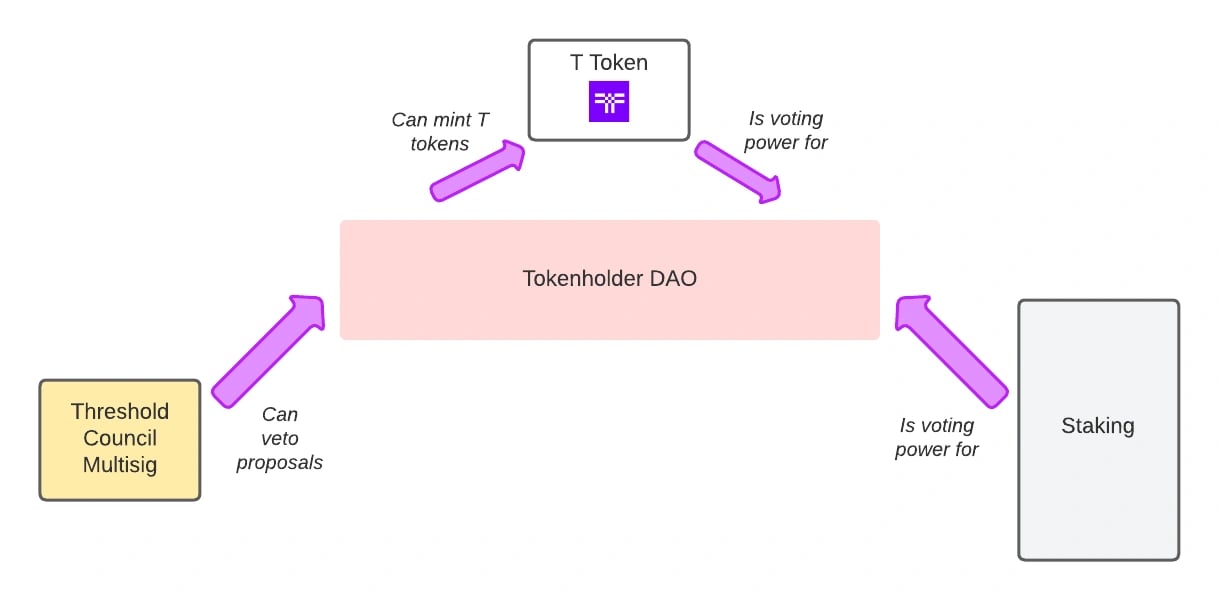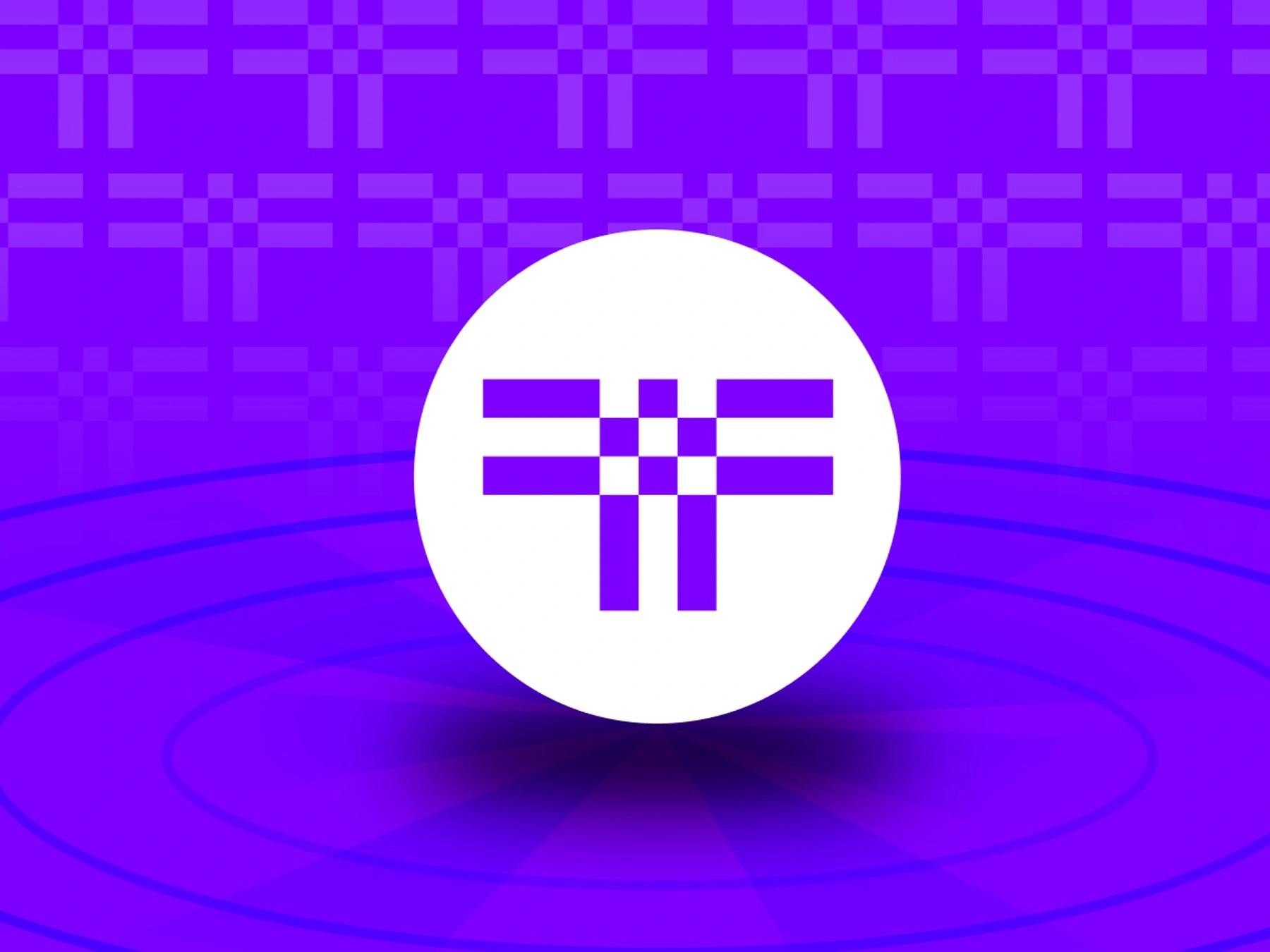Subscribe to wiki
Share wiki
Bookmark
Threshold Network
The Agent Tokenization Platform (ATP):Build autonomous agents with the Agent Development Kit (ADK)
Threshold Network
Threshold Network launched in January 2022, is a network that offers a full suite of decentralized threshold cryptography services designed to address user privacy and control concerns within decentralized applications and Web 3.0 platforms. Threshold cryptography protects data by distributing operations across a network of independent nodes. [1][2][8]
The Threshold Ecosystem
Threshold cryptography distributes sensitive operations among multiple independent entities, like nodes in a network. Success requires a minimum of these entities to collaborate. This approach increases security, reduces dependence on trust, and maintains functionality even with some malicious actors. Unlike centralized systems, where one actor can disrupt everything, threshold cryptosystems prevent such single points of failure. [4]
The Threshold Network was launched as the product of the first on-chain merger between two existing decentralized networks — the Keep Network and NuCypher. Services on the Threshold Network include a proxy re-encryption service for user-controlled secrets management and dynamic access control, and tBTC v2, a decentralized and permissionless Bitcoin-to-Ethereum asset bridge. [3]
Proxy Re-encryption (PRE)
Threshold’s Proxy Re-Encryption service, PRE, is cryptographic middleware for user privacy-preserving applications. Proxy Re-encryption is a scalable end-to-end encryption protocol that allows a proxy entity to transform (or re-encrypt) encrypted data from one encryption key to another without revealing the plaintext data. The nodes on the Threshold Network act as these proxy entities and use threshold cryptography to securely and cooperatively re-encrypt data for recipients based on access conditions defined by the data owner. [4]
PRE has practical applications in scenarios where preserving data ownership and enabling data sharing are essential, like paid subscriptions to encrypted content or secure transfer of ownership for encrypted NFTs. Data remains private and encrypted, yet owners can securely share and enforce access controls through cryptography. [4]
tBTC v2
tBTC is a decentralized bridge connecting Bitcoin and Ethereum. It offers Bitcoin holders the ability to access the DeFi and Web3 ecosystem in a permissionless manner. In contrast to existing solutions that involve sending Bitcoin to intermediaries for Ethereum tokens, tBTC employs a second-generation approach that replaces centralized intermediaries with a randomly selected group of operators running nodes on the Threshold Network.
This group of independent operators collaborates using threshold cryptography to secure deposited Bitcoin. For any action involving a Bitcoin, a threshold majority of these operators must agree. The selection of operators is rotated weekly, preventing any single operator or group from seizing control. Unlike alternatives, tBTC's approach ensures user funds are governed by mathematical protocols rather than hardware or human entities. Additionally, tBTC is permissionless, enabling universal access. [5]
tBTC Redemptions
On July 26, 2023, Threshold Network introduced tBTC Redemptions on the mainnet. The launch of tBTC redemptions enables Bitcoin holders to transfer and use BTC within the DeFi ecosystem via a scalable, decentralized solution without permission. [18]
Our goal is clear: To unlock the full potential of your Bitcoin across DeFi. - the website stated[18]
According to the press release, the idea for Redemption began after Ethereum founder Vitalik Buterin took to Twitter to comment:
“It's embarrassing that we still can't easily move between the two largest crypto ecosystems trustlessly.”[17]
Threshold DAO
Threshold operates as a community-driven initiative governed by an eponymous Decentralized Autonomous Organization (DAO), which includes the constituencies of both the NuCypher and Keep networks. There are two core entities within the Threshold DAO — the Tokenholder DAO and the Elected Council. [6]
The goal of this two-pronged structure is to enhance representation while ensuring accountability. Mirroring the checks and balances system prevalent in constitutional governments, these governance bodies mutually ensure oversight. Also, they hold separate responsibilities woven into the governance framework. [6]

On October 14, 2023, Threshold DAO approved a Solana-Bitcoin growth proposal presented by Mango DAO and Dual DAO. The intent of the proposal was to establish tBTC on Solana as the favored representation of Bitcoin and to initiate a flywheel effect, fostering a growth campaign specifically tailored for DAOs. Central to this initiative is Mango DAO's strategic treasury shift towards tBTC, a unique Bitcoin representation on Solana. Unlike other Bitcoin DeFi assets, tBTC operates natively, is decentralized, and relies on math and the Threshold Network instead of intermediaries.
Governance Process
The lifecycle of a successful proposal includes forum discussion among community members, temperature checks via an off-chain snapshot, proposal creation by the community member with enough voting weight, the voting period which lasts for 10 days, a timelock delay of 2 days whereby anyone can interact with the Governor Bravo smart contracts to queue an approved proposal into the Timelock contract, and finally, execution of the approved proposal after the timelock delay. [7]
Threshold Token (T)
The Threshold Token (T) is the Threshold Network’s upgraded native token, which functions both as a utility token for the network and as a governance token for the Threshold DAO. The T token allows for the running of the network. [3]
Holders of the T Token can earn staking rewards by staking tokens in order to become validating nodes and receive rewards. The amount of $T staked by each node impacts the amount the validating node will receive in rewards. [3]
The Keep Network also proposed providing incentives for users to move their liquidity from the KEEP – ETH pool available on UniSwap to a T – ETH pool. This would increase the available yield rewards, thereby increasing the number of possible Threshold token holders and increasing outreach to new community members for the network’s DAO. [3]
The initial supply for the T token is 10 Billion. 4.5B was allocated to the NuCypher (NU) holders, 4.5B to Keep Network (KEEP) holders, and 1B to Threshold DAO. [2]
Partnerships
Threshold Network x Wormhole
In May 2023, Threshold Network launched on the cross-chain token protocol Wormhole to allow the easy movement of a tokenized representation of Bitcoin (BTC) to other blockchain ecosystems. [9][10]
Wormhole proposed the integration to the Threshold community in mid-April, 2023 saying its objective was to help threshold bitcoin (tBTC) become the dominant bitcoin representative token in on-chain DeFi ecosystems. The Wormhole integration allows tBTC to be transferred to both Ethereum Virtual Machine (EVM) chains, such as Arbitrum, Optimism, and Polygon, and non-EVM chains like Solana, Aptos, Sui, and Cosmos. [9][10]
Powered by Wormhole, Threshold has later launched on Arbitrum[12], Optimism[13], Polygon[14], Base[15], and Solana[16]. With the integrations, users can make use of BTC on the respective blockchains. [12]
Threshold Network x Bond Protocol
On June 21, 2023, Threshold Network launched its first bonding program in an effort to increase awareness and usage of tBTC. This program allows users to swap tokens they hold (e.g., WBTC or Curve LP tokens) for discounted Threshold tokens (T) that are delivered after a period of time (the maturity of the bond). This process is managed by the Bond Protocol in a trust-minimized manner. [11]
Token holders receive benefits including discounted T token acquisition, which grants participation in Threshold governance. These tokens can also be staked for network operation and liquidity provision, leading to rewards. Simultaneously, the Threshold Network experiences augmented market liquidity through Protocol Owned Liquidity, an alternative to rented liquidity that can be volatile due to shifting yield trends. [11]
See something wrong?
The Agent Tokenization Platform (ATP):Build autonomous agents with the Agent Development Kit (ADK)
